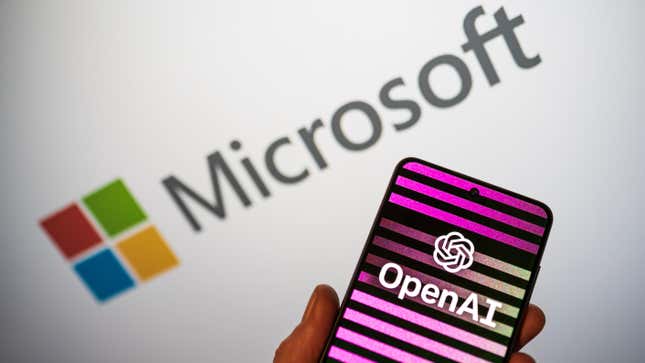
Artificial intelligence has proved a costly endeavor—well, yes, in terms of money, but AI requires massive amounts of energy, and water consumption to operate at scale. That hasn’t stopped big tech companies such as Google and Microsoft from putting that energy-hungry AI into practically every single one of their user and enterprise end-products. Big daddy Microsoft has been trying to keep its (OpenAI-assisted) lead in the AI rat race, and it may need to grab the fuel rod by both hands if it wants to continue its big AI ambitions.
And when we say fuel rod, we mean it literally. Microsoft put out calls for a program manager on “Nuclear Technology” on Monday. As first reported by CNBC, The job specifically mentions that this new initiative would use “microreactors” and “Small Modular Reactors” to power the data centers used by Microsoft Cloud and AI. Whatever it is, the scope for Microsoft’s nuclear AI could be “global” as Microsoft has Azure data centers in all parts of the globe.
Microsoft declined to comment on any plans for future nuclear endeavors. The company instead linked to past blog posts on company sustainability initiatives. It’s unclear what plans Microsoft may have for nuclear-powered AI. The position references that the nuclear program manager would build a “roadmap for the technology’s integration,” which would also mean selecting partners for developing and implementing how the hell the tech giant would facilitate nuclear.
Small Modular Reactors, or SMRs, are a proposed class of reactors that would be a purportedly smaller version of a full-on nuclear plant with a smaller power capacity. The idea is they can be built in one location and then moved to a separate site. There are only a few prototype SMRs implemented in places like Russia and China, though the U.S. Office of Nuclear Energy only approved its first SMR design in January this year.
Back in May, Microsoft signed a power purchase agreement with nuclear fusion startup Helion set to start in 2028. That’s different than an SMR, which still uses fission to generate power, and while there have been some recent successes with fusion this past year, we still could be a long way off from any kind of energy pivot.
Microsoft has spent the last year implementing generative AI into practically every one of its software products. Most recently, the Redmond, Washington company announced its AI copilot for Windows 11 to act as a kind of virtual assistant on a desktop. Court documents have shown that Microsoft has been looking for ways to implement more AI capabilities on its Azure cloud platform.
But powering that AI is extraordinarily costly, even more so than its other cloud-based products. Microsoft’s latest sustainability report noted that the company’s water consumption has increased 30% year over year in order to keep its AI supercomputers cool. Microsoft has put billions of dollars into a partnership with ChatGPT-maker OpenAI, and the Redmond company now being forced to power and cool its partner’s growing energy needs to train OpenAI’s latest models. Training GPT-3 consumed enough water to fill a full nuclear reactor’s cooling tower, according to one recent study.
Studies have shown AI is responsible for massive amounts of carbon emissions, and OpenAI’s GPT-3 model was responsible for CO2 emissions than most other large language models. The company’s GPT-4 model is purportedly 1,000 times more powerful than GPT-3.5 and was trained on nearly four times as much data. Running a larger AI model would require several times as much power as smaller models, and AI companies aren’t slowing down.